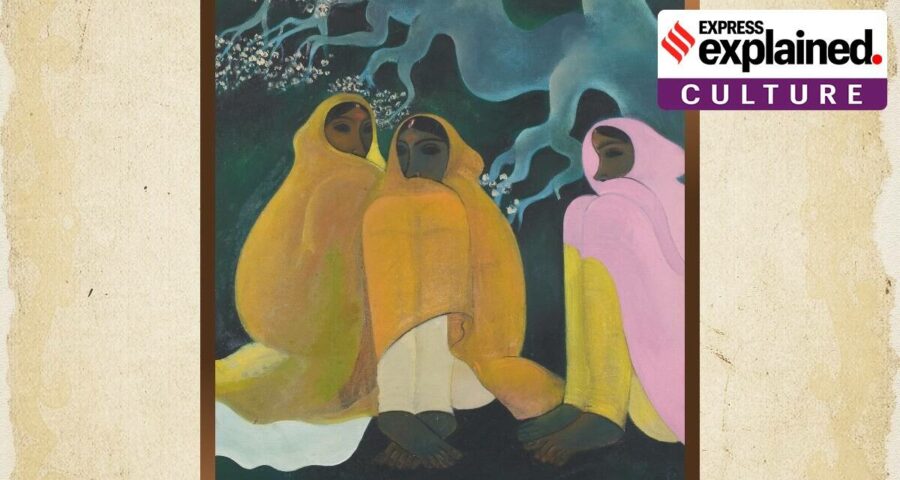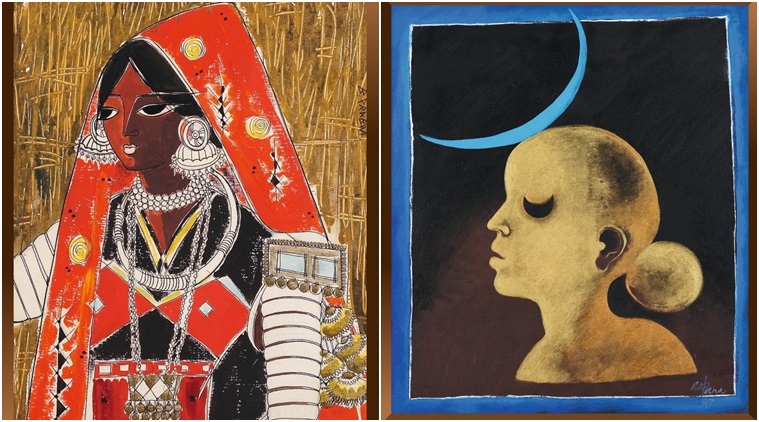The ‘Maharajah collection’, as it is called, has over 4,000 works, including by Jatin Das, Anjolie Ela Menon, M F Husain and V S Gaitonde.
The Tata group has reclaimed Air India, but the priceless Air India art collection is not part of the deal and is likely to stay with the government. A look at what is in the collection, and why it is important:
The collection
The ‘Maharajah collection’, as it is called, has over 4,000 works, including by Jatin Das, Anjolie Ela Menon, M F Husain and V S Gaitonde. These were on display across Air India offices, and on its calendars, posters and menu cards. There are posters by cartoonist Mario Miranda as well as ads designed by The New Yorker cartoonist Peter Arno, besides paintings, textiles, sculptures, and traditional wooden and bronze artwork. No official estimate exists of the worth of the entire collection. As the airline expanded, so did the collection. But as computerised booking came in, some of the international booking offices were shut/streamlined, and the artworks were either sent back to Mumbai or stored elsewhere. Mumbai-based art historian and conservation architect Meera Dass, who is working on a book about the archive, said, “The airline always had the culture of being representative of the nation… The collection served that purpose — to present India as an ancient civilisation, but with a modern outlook.”
The collector
Air India bought its first set of six paintings for Rs 87.50 in 1956, from a novice art school graduate, B Prabha. The collection was built over more than six decades after Independence, driven by JRD Tata’s philosophy of “putting a little bit of India” in the booking offices of the erstwhile Tata Airlines.
“He (JRD Tata) was a great nationalist and he used the airline’s booking offices outside India to expose the country’s art and artists to the world,” Dass said.
While some of the works were commissioned by the airline and some were bought for as low as Rs 50-500, others were bartered for air tickets to artists travelling abroad. In an interview, M F Husain had said: “They (Air India) would take the paintings and give free air tickets in return. As a result, the artists could travel to Czechoslovakia, Hong Kong, Paris. I did about four or five trips.”
There were other interesting ways of remunerating the artists. An ashtray — a porcelain shell surrounded by a serpent and supported by an elephant and swan — was commissioned to Salvador Dali, to be presented as a gift to first-class passengers. In return, Dali asked for a baby elephant, which was duly procured from the Bangalore zoo and sent to him.
State of the art
The works haven’t been opened for decades, and it is believed some of them have been lost, stolen or damaged. In June 2017, Jatin Das learned that his 1991 oil painting Flying Apsara, acquired by Air India, was for sale on the open market for Rs 25 lakh. Following investigations, a complaint was filed against a former Air India executive for stealing government property. Subsequently, it was reported that the airline was “examining how many more former or serving Air India officials could be in possession of such paintings”.
Last year, just before the pandemic hit, Air India organised a four-day exhibition of 7,000 artefacts and memorabilia in Mumbai.
Dass said that since 2016, there have been serious efforts to create a detailed inventory of all art pieces owned by Air India. While a bulk of the collection is in Mumbai, some works are also in erstwhile Air India offices in New York, Washington, Perth, Rome, Tokyo, Paris, and London. The effort is now to get them back, a tedious process given that they were sent out 30 to 40 years ago.
There are, however, no plans to use the artworks to raise funds. The ministries of Civil Aviation and Culture are working out an agreement to transfer the collection to Delhi and display it at a prominent museum.
“Even though the nation couldn’t afford the airline, we can surely create a dedicated museum to display this landmark collection, which unravels the India story, slice by slice,” Dass said.
Newsletter | Click to get the day’s best explainers in your inbox
Source: Read Full Article



